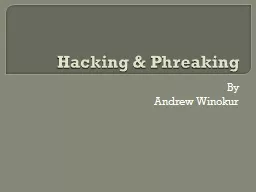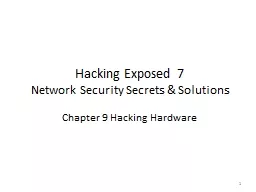PPT-Web Hacking 1 Overview Why web
Author : pamella-moone | Published Date : 2018-02-12
HTTP Protocol HTTP Attacks 2 Why Web Attacks HTTP is the largest fraction of Internet traffic Web with email is most common application service imported by local
Presentation Embed Code
Download Presentation
Download Presentation The PPT/PDF document "Web Hacking 1 Overview Why web" is the property of its rightful owner. Permission is granted to download and print the materials on this website for personal, non-commercial use only, and to display it on your personal computer provided you do not modify the materials and that you retain all copyright notices contained in the materials. By downloading content from our website, you accept the terms of this agreement.
Web Hacking 1 Overview Why web: Transcript
Download Rules Of Document
"Web Hacking 1 Overview Why web"The content belongs to its owner. You may download and print it for personal use, without modification, and keep all copyright notices. By downloading, you agree to these terms.
Related Documents













